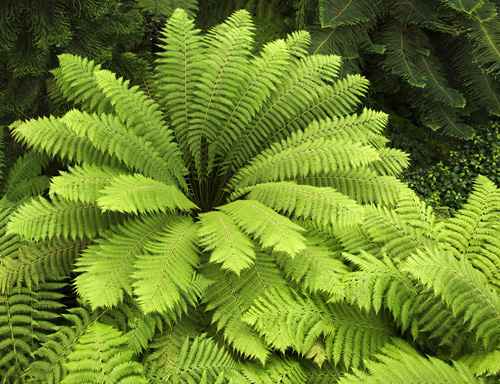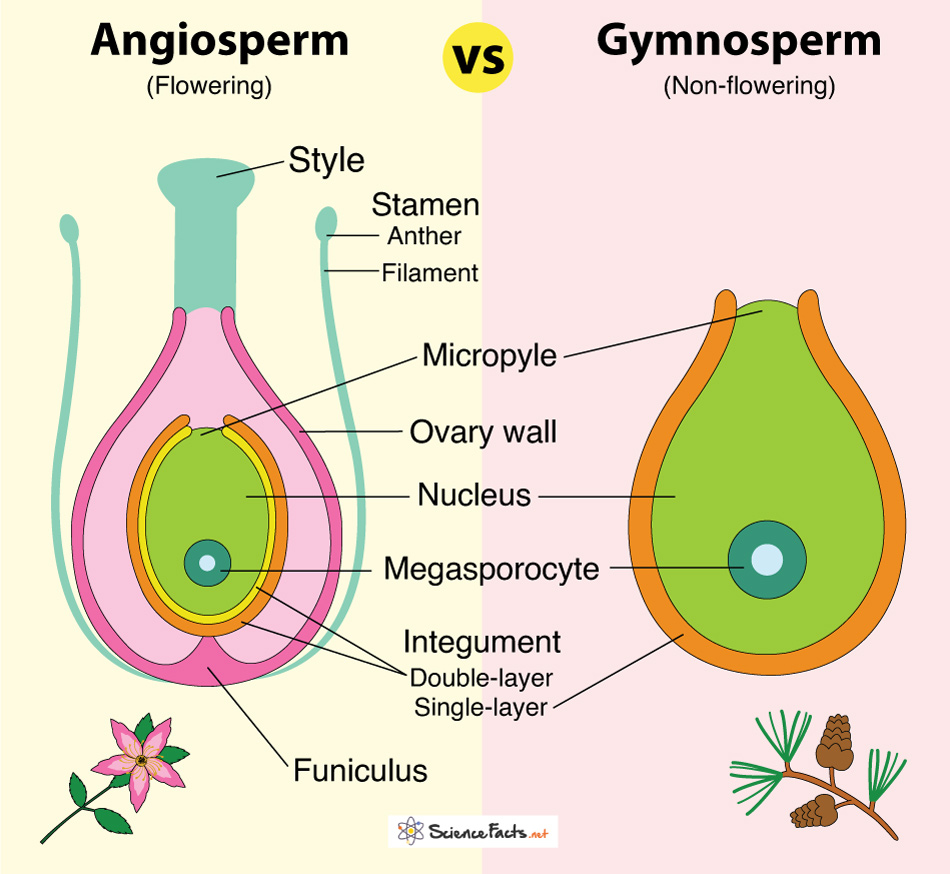CBSE Class 11 Biology Chapter 3 Revision Notes Part 2
Chapter 3: Plant Kingdom Revision Notes Part 2

Source: Plant kingdom classification
This revision note will dive into the following groups of the plant kingdom (check out Part 1 if you haven’t already!):
- Algae
- Bryophytes
- Pteridophytes
- Gymnosperms
- Angiosperms
Pteridophytes

Source: Pteridophytes
- Pteridophytes are considered the first plants to evolve on land. Pteridophytes are the first terrestrial plants to possess vascular tissues – xylem and phloem.
- They are seedless and vascular. Their vascular system promotes the conduction of water and other substances.
- They have a well-differentiated plant body into root, stem, and leaves.
- Pteridophytes show many characteristics of their ancestors. Unlike most members of the plant kingdom, pteridophytes do not reproduce through seeds; they reproduce through spores instead. Their sex organs are multicellular.
- They reproduce through spores which develop into sporangia. Sporangia are produced in groups on sporophylls. The spores are either homosporous and heterosporous.
- Pteridophytes are used for medicinal purposes and as soil binders and are also frequently grown as ornamentals.
Classification of Pteridophytes
Pteridophyta is classified into four main classes:
- Psilopsida – They are the most primitive. The stem is photosynthetic and branched, and Rhizoids are present, and leaves are absent. The sporophyte is homosporous. E.g., Psilotum.
- Lycopsida – Commonly known as club moss, they have a well-differentiated plant body with root, stem, rhinophores, and leaves. The sporophyte is homosporous or heterosporous. E.g., Selaginella.
- Sphenopsida – Commonly known as horsetail, has a well-differentiated plant body with roots arising from nodes of underground rhizome, stem, and leaves. Sporangia are borne on strobili and are homosporous. E.g., Equisetum.
- Pteropsida – Commonly known as a fern, and has a well-differentiated plant body with roots, stem, and leaves. The sporophyte is homosporous or heterosporous. E.g., Pteris.
Gymnosperms
- Gymnosperms produce two types of spores within the sporangia borne on sporophylls placed spirally along the axis to form compact cones or strobili.
- The male strobili produces microsporophylls and microsporangia, whereas the female strobili produces megasporophylls and megasporangia. Double fertilization does not occur in the Gymnosperms because the male and the female cones are separated.
- Smaller plants where ovules are not surrounded by ovary walls. Ovules exposed before and after fertilization. These include tall trees, shrubs, and medium-sized trees in their category.
- Gymnosperms have a well-differentiated plant body and vascular tissues. They bear naked seeds, i.e., seeds are not enclosed within the fruit.
- The stems are branched or unbranched.
- Roots in some genera have a fungal association in the form of mycorrhiza, while in some others, small specialized roots called coralloid roots are associated with nitrogen-fixing bacteria.
- They are heterosporous; they produce haploid microspores and megaspores.

Source: Angiosperms and gymnosperms
Angiosperms
- Angiosperms are a very large group of plants that occur in most habitats. In Angiosperms, the male sex organ is the stamen, and the female sex organ is the pistil or carpel. Each stamen consists of a slender stalk-like structure called the filament and a lobe at the tip of the stamen, which is called anther lobe. After meiosis, pollen grains are produced by the anther.
- The pistil is made up of an ovary which encloses many ovules inside it. The female gametophyte containing the egg cell is enclosed within these ovules. Once the pollen grains germinate, the pollen tube pushes its way through the style and stigma to reach the egg cell within the ovule.
- The pollen tube discharges two male gametes. One male gamete fuses with the egg cell to form the diploid zygote. The other male gamete fuses with the polar nuclei to form a triploid primary endosperm nucleus, also termed as ‘PEN.’ Since two fusions happen simultaneously, the fertilization is called ‘double fertilization.’ After fertilization, the zygote develops into the embryo, and the PEN changes into endosperm to provide nutrition to the developing embryo.
Characteristics of Angiosperms
- They range in size from tiny to tall trees.
- They are vascular plants with stems, roots, and leaves.
- The seeds develop inside the plant organs and form fruit, hence termed flowering plants.
- The stamens and carpels are organized into a structure called the flower.
- The flowers undergo double and triple fusion, which leads to the formation of diploid zygote and triploid endosperm.
- The entire process of fertilization is very quick in angiosperms.
